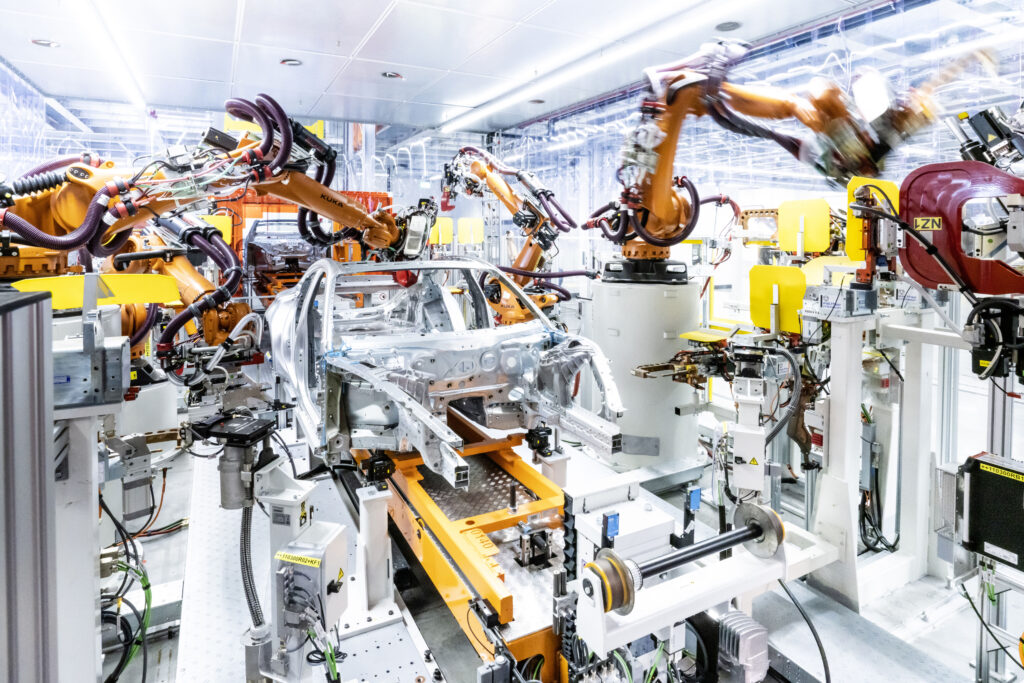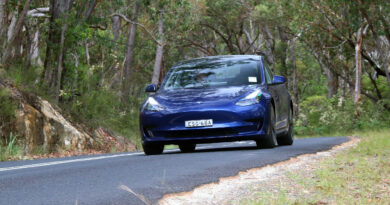Audi names e-tron GT as first electric RS uber-sports model
Audi has confirmed a hyper-fast e-tron GT RS will launch alongside the merely extremely-fast standard e-tron GT battery electric four-door coupe before the end of 2020.
Audi’s global boss Markus Duesmann, pictured above, announced the RS as he introduced a virtual media briefing on the e-tron GT’s build process and digitised sound package.
RS models have traditionally been berserk high-powered versions of road cars powered by pumped-up petrol engines.
Want the latest EV news and reviews delivered to your inbox? Subscribe to our weekly newsletter!
The move to electric is a win for Audi and its Audi Sport high-performance division, as deadly rivals BMW M performance and Mercedes-AMG have yet to release a tuned version of one of their parents’ battery electric vehicles.
BMW has been hinting that electric M models are imminent.
“With the e-tron GT we are adding a new chapter to our story,” Duesmann said. “We are taking sporting flair to a new dimension.

“Strong performance and high efficiency are the hallmarks of the e-tron GT. The all-electric quattro all-wheel drive offers the perfect combination of driving dynamics and safety.
“The e-tron GT is a standalone gran turismo and true Audi, characterised first of all by its design. It is our first EV with a flat floor architecture. This set-up provide a low centre of gravity, an athletic look and a dynamic driving performance.
“We are taking things another step further; I am pleased to announce today that there will be also an RS version of the e-tron GT, which will be launched together with the e-tron GT.”
Now entering production in Germany, the e-tron GT models will be unveiled in late 2020 and should be on-sale in Australia before the end of 2021. Pricing is as yet unspecified, but expect to pay a small fortune when they do get here.
Audi already sells the e-tron five-door SUV in Australia. A tri-motor e-tron S version is on the way and a Q4 e-tron has also been previewed.
Duesmann released no technical or performance information about the e-tron GT RS, but previous reports have speculated it will be the fastest Audi ever made with around 600kW and a 0-100km/h time under 2.8 seconds.
Based on the same J1 architecture as the Porsche Taycan EV, the e-tron GT first appeared as a concept at the 2018 Los Angeles show powered by two e-motors boasting 434kW.

While this is the first BEV RS production vehicle, Audi Sport has previously confirmed it will also soon offer RS plug-in hybrid models.
Didgeridoo considered for e-tron sound
Audi’s presentation also revealed unusual details, such as an optional e-sound package developed for the e-tron GT could have included a didgeridoo.
“To find the basis for the sound of the e-tron GT, I tried all sorts of instruments – from the violin to the electric guitar all the way to the didgeridoo, a wind instrument from Australia,” Audi sound designer Rudolf Halbmeir said.
That didn’t work, but sounds including the drone of a model helicopter and whine of a cordless screwdriver were mixed in.

“We deliberately avoided imitating an internal combustion engine or a spaceship from a science fiction movie,” explained Halbmeir. “Instead, we developed a sporty, expansive and sophisticated sound that also comes across as clear and distinctive. It combines familiar sound patterns with new, futuristic elements.”
During the presentation Audi also revealed the production process of the e-tron GT was unique within the Volkswagen Group because it is built alongside the V10 mid-engined R8 sports car.
The two are totally unrelated technically, except they will be the top two ranked vehicles by power in the Audi line-up when the GT starts rolling off the line.
Production of the e-tron GT was designed without physical prototypes – a first at Audi. While the assembly process is highly automated, it still includes a significant amount of hand-building. All up, each example takes two-and-a-half days to complete, including a 40km test drive.

Procedures Audi is claiming as innovations include a body shop, comprising 10 stations and 34 robots, each e-tron GT body – made from an ultra-high-strength steel and aluminium mix – passes along twice. This allows production within the existing factory floor space.
Audi says the design of the Audi e-tron GT places unusually high demands on production quality, citing the large 350mm side wall frame draw depth between its highest and lowest point as an example. This has prompted a new inline correlation-free measuring procedure.




